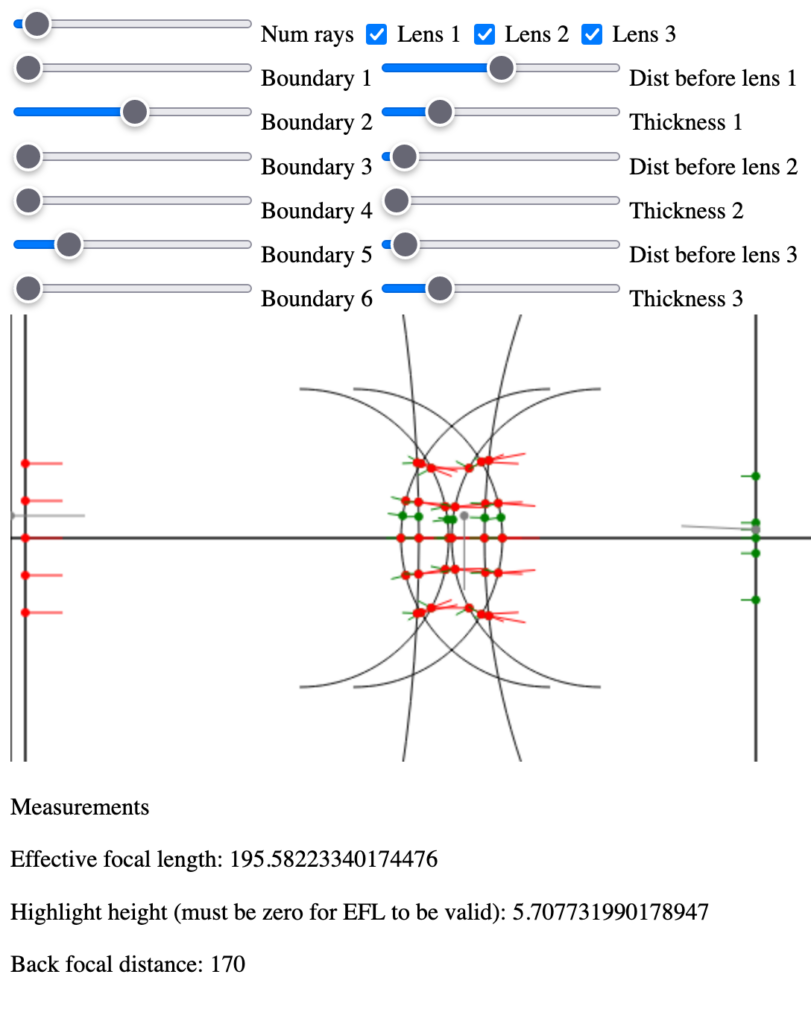I’ve continued to work on the optical ray diagram tool prototype. I added a way to measure the effective focal length (EFL) of the lens system. It isn’t automatic, but by adjusting the parameters you can align an intersection at the optical axis and read off the EFL. Obviously this should be a one button click sort of thing, but it is kind of interesting to see how the various parameters affect EFL.

My main area of interest before going to automation is identifying and coding all the various measurements that you want of a lens. To identify these, I’ve been reading the excellent Applied Optics and Optical Engineering edited by Rudolf Kingslake. Chapter 3, Photographic Objectives, traces the history of the development of lenses from the development of photography to the book’s publication in the 1960s. I would recommend either starting there if you have some familiarity with optics already. If you’re new to optical design, start with Chapter 1, Lens Design. I got my copy from the public library but you can also borrow a digital copy from the Open Library on archive.org.
I realized I should change the example lens configuration in my prototype to a Cooke Triplet after reading Chapter 3. As the book points out, a lot of modern lens designs can be traced to or analyzed as variants of the Cooke Triplet. It is also unique in being only three elements but having performance that is good enough to warrant doing the work of designing one yourself. It is also non-trivial enough that you want an automated tool to design one, so it makes a good example.
The next step will be to add proper measurements of the various aberrations and distortions. I’ll be using worked examples from Applied Optics and Optical Engineering to check the calculations of my tool. The current default configuration is from this student project in MIT OpenCourseWare by Choi, Cooper, Ong, and Smith. I think I’ve already found a discrepancy in my results so my work is cut out for me.
Another source for a worked example is Dennis Taylor’s original patent from 1895. While Taylor invented it, the design is named after the company he was working for at the time – T. Cooke & Sons of York.
